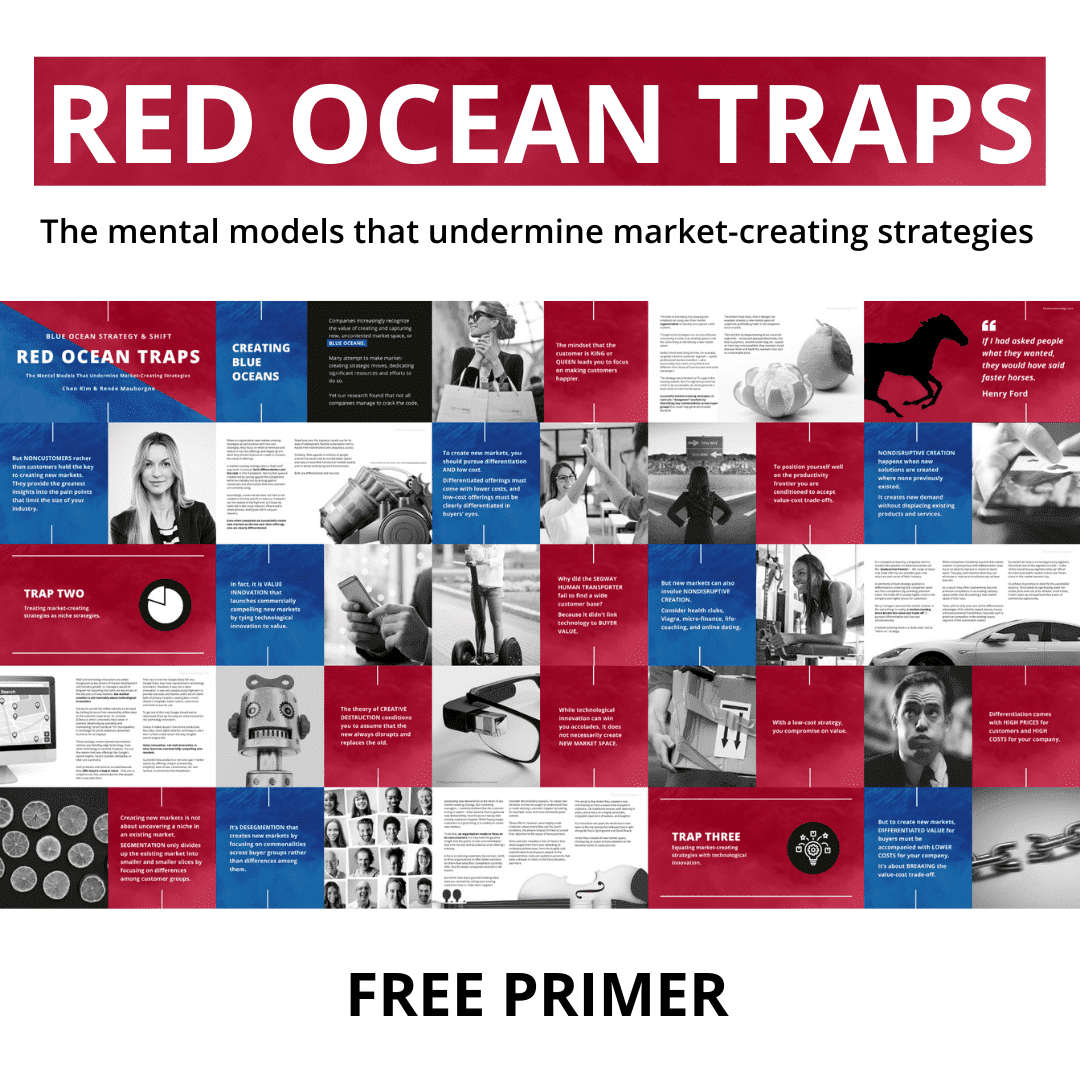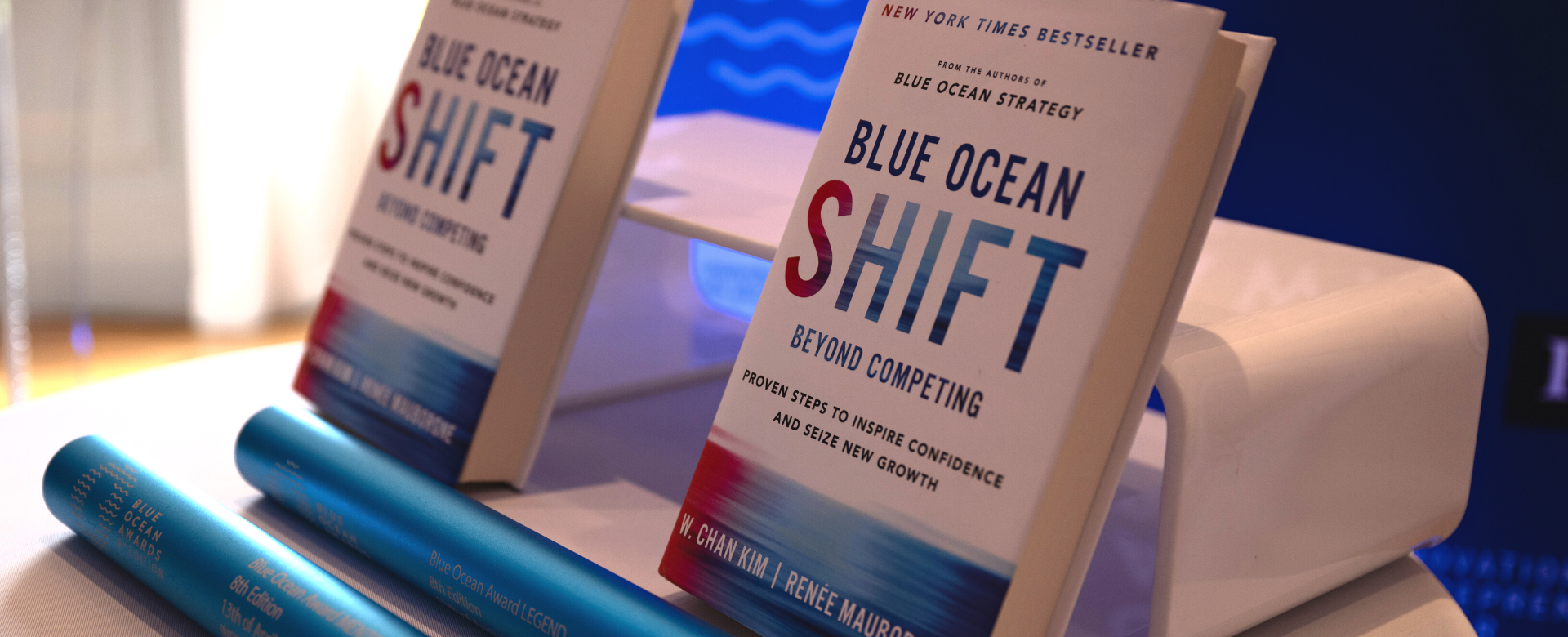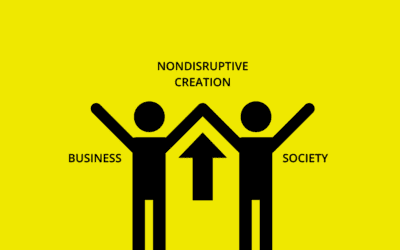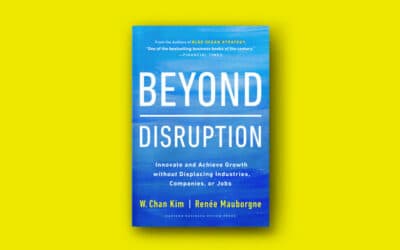When it comes to building a blue ocean, what organization wouldn’t want to have an offering like Google’s Search division? Its search engine is easy, fast, accurate – with an underlying algorithm that instantaneously sorts and ranks documents, images, and videos, making people more productive in finding information than most ever imagined. Everyone from first graders to senior citizens use it. It’s even become a verb. With nearly 65% of world market share, Google created a veritable blue ocean.
Then there’s Google Glass. Announced to the public in 2012, it was selected by Time Magazine as one of the “Best Inventions of the Year.” With this revolutionary digital eyewear, Google intended to create a new mass market for wearable computers. However, the initial excitement soon gave way to disappointment. Priced at $1,500 and launched with great fanfare, people found Glass more like a high-tech high-end toy than a groundbreaking killer app gadget that will revolutionize the human experience. And as wearable tech its futuristic look tended to side more with the weird than the fashionable not to mention the serious privacy issues it raised. Less than two years after the launch of the prototype, Glass was sent back to the lab for redesign.
What went wrong? And what should the team behind Google Glass’s reset do differently to avoid a repeat scenario and create instead a blue ocean like Google’s search? For starters, it should understand the six red ocean traps. The six red ocean traps are the explicit and implicit assumptions managers often act under in setting out to make market-creating strategic moves. The trouble is, instead of abetting the creation of profitable new markets, they anchor managers in red oceans and prevent them from entering blue waters. It was some of these assumptions that trapped Google in its drive to create a new market with Glass.
What are the six red ocean traps? Are you caught too? Read on.
Trap One: Looking to Existing Customers for Insight into Creating New Demand
Generating new demand lies at the heart of any market-creating strategy. But marketing managers – trained to believe that the customer is king – or queen – often assume that in order to generate new demand they must focus on making their existing customers happier.
While having happy customers is a good thing, it is unlikely to create new markets. To do that, an organization needs to turn its focus on noncustomers, for they hold the greatest insight into the points of pain and intimidation that limit the size and boundaries of an offering’s industry. A focus on existing customers, by contrast, tends to drive organizations to offer better solutions for them than what competitors currently offer – but keeps companies moored in red oceans. Just think: How many ground-breaking ideas have you received by asking your existing customers how to make them happier?
Consider the orchestra industry. To create new demand, orchestras sought to understand how to make existing customers happier hosting, for example, even more renowned guest soloists. These efforts, however, were largely made irrelevant, when Andre Rieu and his Dutch orchestra, the Johann Strauss Orchestra, turned their attention to the ocean of noncustomers. Noncustomers revealed a host of factors that discouraged them from ever attending an orchestra performance from the lengthy and sophisticated musical pieces played, to the expected dress code and audience protocols that were unknown to them, to the fancy theaters, and more. The result is that Andre Rieu created a non-intimidating orchestra experience enjoyed in stadiums not traditional venues, with dancing in aisles, a focus on a highly accessible, enjoyable repertoire of waltzes, and laughter. For more than ten years his world tours have been in the top twenty-five billboard tours right alongside Bruce Springsteen and David Bowie. Andre Rieu created new all new market space, introducing an ocean of once noncustomers to the beautiful world of classical music.
Trap Two: Treating Market-Creating Strategies as Niche Strategies
The field of marketing has placed great emphasis on using ever-finer market segmentation to identify and capture niche markets. Though niche strategies can be very effective, uncovering a niche in an existing space is not the same thing as identifying a new market space.
Delta’s short-lived Song Airlines, for example, targeted a distinct customer segment – stylish professional women travellers — who presumably had needs and preferences different from those of businessmen and other passengers. The strategy was intended to fill a gap in the existing market. But the segment proved too small to be sustainable, let alone generate a blue ocean of new market space.
Successful market-creating strategies, in contrast, “desegment” markets by identifying key commonalities across buyer groups that could help generate broader demand. The British food chain “Pret A Manger,” for example, created a new market space of sustained profitable growth in the prepared lunch market by desgementing three customer segments -restaurant-going professionals, fast food customers, and the brown bag set – based on their key commonalities: they wanted a lunch that was fresh and healthful, wanted it fast and at a reasonable price.
Trap Three: Confusing Technology Innovation with Market-Creating Strategies
R&D and technology innovation are widely recognized as key drivers of market development and industry growth, so managers would be forgiven for assuming that both are key drivers in the discovery of new markets. But market creation is not inevitably about technological innovation. Starbucks turned the coffee industry on its head by shifting its focus from commodity coffee sales to the customer experience. Or consider JCDecaux, which unlocked a blue ocean in outdoor advertising by providing and maintaining “street furniture” for municipalities in exchange for prime stationary downtown locations for ad displays. These strategic moves opened new markets without any bleeding-edge technology.
Even when technology is involved, however, it is not the reason that new offerings like Google’s search engine, Intuit’s Quicken, Wikipedia, or Uber are successful. Such products and services succeed because they offer buyers a leap in value – they are so simple to use, fun, and productive that people fall in love with them. This trap is one that Google Glass fell into. Google Glass may have represented a technology innovation. However, it was not a value innovation. It was too conspicuously high-tech to provide real style and fashion and it set off alarm bells of privacy violation, causing bars, movie theaters, hospitals, locker rooms, classrooms and more to ban its use. To get out of this trap Google should aim to rejuvenate Glass by focusing on value innovation, not technology innovation. Unless it makes buyers’ lives more productive, less risky, more stylish and fun, and easy to use it won’t unlock a blue ocean the way Google’s search engine did.
Value innovation, not tech innovation, is what launches commercially compelling new markets. Successful new products or services open market spaces by offering a leap in productivity, simplicity, ease of use, convenience, fun and fashion, or environmental friendliness.
Trap Four: Equating Creative Destruction with Market Creation
Joseph Schumpeter’s theory of creative destruction lies at the heart of innovation economics. Creative destruction occurs when an invention disrupts a market by displacing an earlier technology or existing product or service. In Schumpeter’s framework, the old is incessantly destroyed and replaced by the new.
But market creation does not always involve destruction. It also involves nondestructive creation where new demand is created without displacing existing products or services. Viagra, for example, established a new market in lifestyle drugs without making any earlier technology or existing product/service obsolete.
Nondestructive market-creating moves offer solutions where none previously existed. And even when a certain amount of destruction is involved, nondestructive creation often plays a larger role than you might think. Nintendo’s Wii game player, for example, complemented more than replaced existing game systems, because the Wii attracted younger children and older adults who hadn’t previously played video games.
Conflating market creation with creative destruction not only limits an organization’s set of opportunities; it can also build resistance to market-creating strategies within established companies and lead start-ups to unnecessarily take on larger companies with multiple times the resources and market reach. Commercially compelling new markets are at least as much —if not more —about nondistruptive creation as they are about disruption.
Trap Five: Equating Market-Creating Strategies with Differentiation
In a competitive industry, companies tend to choose their position on what economists call the “productivity frontier,” the range of value-cost trade-offs that are available given the structure and norms of their industry. A commonly chosen strategic position is differentiation, meaning that companies stand out from competitors by providing premium value; the trade-off is usually higher costs to the company and higher prices for customers. Many managers assume that market creation is the same thing. In reality, a market-creating move breaks the value-cost trade-off. It pursues differentiation and low cost simultaneously. A market-creating move is a “both-and,” not an “either-or,” strategy.
When companies mistakenly assume that market creation is synonymous with differentiation, they focus on what to improve or create to stand apart and pay scant heed to what they can eliminate or reduce to simultaneously achieve low cost. As a result, they often inadvertently become premium competitors in an existing industry space rather than discovering a new market space of their own. Tesla, with its lofty price and all the differentiated advantages of its vehicles (speed, beauty, luxury, and environmental friendliness), has been such a premium competitor in the existing luxury segment of the automobile market.
Successful as Tesla is in the large luxury segment, the overall size of this segment is small – in the US the overall luxury segment takes up 10% of the total automobile market at best and Tesla’s share in this market remains tiny. To achieve its promise to electrify the automobile industry, Tesla needs to significantly lower the sticker price and cost of its vehicles. Until it does, it won’t open up an expansive blue ocean of commercial opportunity.
Trap Six: Equating Market-Creating Strategies with Low-Cost Strategies
When an organization sees market-creating strategies as synonymous with low-cost strategies, they focus on what to eliminate and reduce in current offerings and largely ignore what they should improve or create to increase the value of offerings.
A market-creating strategy takes a “both-and” approach: It pursues both differentiation and low cost. In this framework, new market space is created not by pricing against the competition within an industry but by pricing against substitutes and alternatives that noncustomers are currently using. Accordingly, a new market does not have to be created at the low end of an industry. Instead it can be created at the high end, as Cirque du Soleil did in the circus industry, iPhone did in smart phones, and Dyson did in vacuum cleaners.
Even when companies do successfully create new markets at the low end, their offerings also are clearly differentiated. Salesforce.com, for instance, stands out for its ease of deployment, flexible subscription terms, hassle-free maintenance and ubiquitous access, while IKEA appeals to millions of people around the world with its standardized, stylish and easy to assemble furniture of reliable quality and its family embracing store environment. Both are differentiated and low cost.
At Google’s May 2015 developer conference, Astro Teller, the head of Google’s research lab Google X, did not don Google Glass, the product he had been touting in previous years. Instead he spoke of Google’s mistake in launching the product with such fanfare it sent the signal Google Glass had arrived — from having four skydivers jump out of a zeppelin while wearing Glass to putting Glass in a fashion show. Such fanfare is not the path to test a prototype. That’s the path that proclaims we’ve arrived, which they hadn’t. Teller assured people at the conference that Google now gets it. That in effect, they will strive to avoid the red ocean trap of treating technology innovation as value innovation and will focus on offering a quantum leap in buyer value for Glass’s next rendition. Will Glass ultimately unlock a blue ocean of new market space? That depends on what Google does to address the issues of privacy, looks, and wearability among others. Being cognizant of the red ocean traps will certainly help.


















